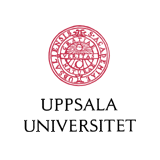|
Impact of Multiuser Diversity and Channel
Variability on Adaptive OFDM.
Wei Wang
Chalmers U. of Technology
Tony Ottosson,
Chalmers U. of Technology
Mikael Sternad,
Uppsala University
Anders Ahlén,
Uppsala University and
Arne Svensson,
Chalmers U. of Technology
IEEE Vehicular Technology Conference VTC2003-Fall,
Orlando, FLA, Oct. 2003. © IEEE
-
Outline:
-
The Swedish Wireless IP project studies
problems that are crucial in the evolution of UMTS towards high
data rates, as well as in future 4G technologies aimed at
rapidly mobile terminals. The goal is to attain higher
througputs for packet data in particular in downlinks,
without unneccesary
bandwidth expansion and while providing acceptable
quality of service for various classes of traffic.
At IEEE VTC-Fall 2003, we presented our
concept for an adaptive OFDM downlink
in four interrelated papers (see links below).
This is Paper 1 of the four papers.
It discusses how the througput of the downlink
improves with the number of users, if
time-frequency resources in fading channels
can be allocated to the users who utilize them best.
This is evaluated analytically in a simplified
scenario where all users have equal average
signal to interference ratios.
The paper discusses how time-variability
of channels within time-frequency bins
allocated to a particular user, with a particular
modulation format, will affect the performance.
We finally discuss how time-frequency
bins should be designed to strike a good balance
between the adverse effect of the variability within bins,
which increases with bin size, and the required
feedback data rate, which decreases with the bin size.
-
Abstract:
-
A downlink radio interface for cellular packet data
systems with wide area coverage and high spectral efficiency is
evaluated. A slotted OFDM radio interface is used, in which
time-frequency bins are allocated adaptively to different mobile users
within a downlink beam, or sector, based on their channel quality.
Frequency
division duplex (FDD) is assumed, which requires
channel prediction in
the terminals and feedback of this information
to a packet scheduler.
The adaptive modulation scheme is optimized by
a novel approach which
maximizes the throughput including also the
ARQ part of the transmission.
A theoretical evaluation of the resulting multiuser
diversity under some idealized assumptions shows
that the spectral efficiency
increases significantly with the number of active users.
The simulations indicate
that the loss of performance due to channel variability within
the bins for vehicular users in frequency-selective fading
environments is rather small.
-
Related publications:
-
Paper 2 at VTC2003,
on the OFDM downlink and cell planning for high SIR.
-
Paper 3 at VTC2003,
on OFDM channel estimation and channel prediction.
-
Paper 4 at VTC2003,
on the impact of prediction errors on the adaptive modulation.
-
-
An overview of the Wireless IP Project (RVK02)
-
Proc. of the IEEE (Dec. 2007)
invited paper on
adaptive transmission in beyond-3G wireless systems.
-
Source:
-
Pdf, (119K)
Postscript (161K)
|
The Wireless IP Project Homepage
|
Main
entry in list of publications
|
This material is posted here with permission of the IEEE.
Such permission of the IEEE does not in any
way imply IEEE endorsement of any of Uppsala University's
products or services.
Internal or personal use of this material is permitted.
However, permission to reprint/republish this material for
advertising or promotional purposes or for creating new collective
works for resale or redistribution must be obtained
from the IEEE by writing to [email protected].
By choosing to view this document, you agree to all
provisions of the copyright laws protecting it.
|

